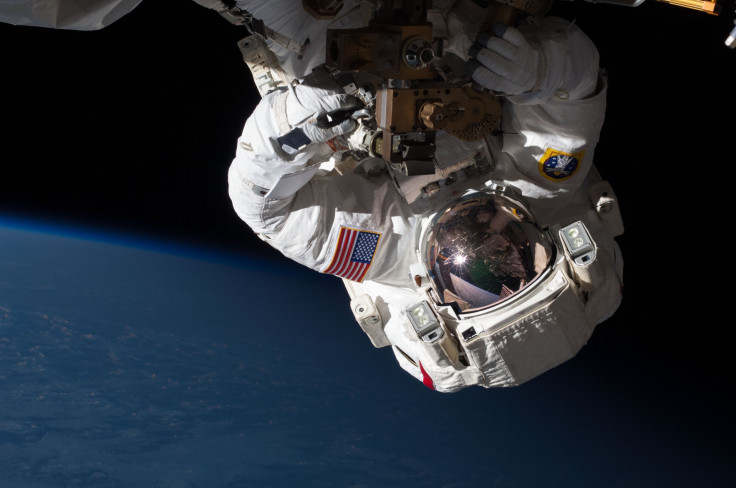Microgravity Causes Permanent Structural Changes In Astronauts' Brains: Study

Spaceflight is a fascinating experience. Everyone who has gone to space, experience a reality that is very different to that of Earth. As spaceflight has evolved, more companies such as Space X and Blue Horizons have created a palpable interest around commercial spaceflight. Common man hurtling into a low-earth orbit seems closer than ever before, leading to questions about the effects of space and microgravity on the human body.
The increasing chance of spaceflight also increases our need for data on the effects of space travel. Medical University of South Carolina (MUSC) neuroradiologist Donna Roberts, conducted a study titled "Effects of Spaceflight on Astronaut Brain Structure as Indicated on MRI," the results of which are published in the Nov. 2 issue of the New England Journal of Medicine.
"Exposure to the space environment has permanent effects on humans that we simply do not understand. What astronauts experience in space must be mitigated to produce safer space travel for the public," said Roberts in a news release.

Space is a hostile environment and presents many physiological and psychological challenges for the men and women of America's space program, the report added. NASA astronauts experience a plethora of physical effects in space. Altered vision and increased pressure inside their heads during spaceflight aboard the International Space Station are just some of the weird bodily reactions to being shot into orbit in a metal capsule.
The increased pressure inside the skull can be a serious problem in space. NASA identifies this visual impairment intracranial pressure syndrome (VIIP) as one of the major issues that cause a threat to astronauts' lives.
"The cause of VIIP syndrome is thought to be related to the redistribution of body fluid toward the head during long-term microgravity exposure; however, the exact cause is unknown. Given safety concerns and the potential impact to human exploration goals, NASA has made determining the cause of VIIP syndrome and how to resolve its effects a top priority," the report said.

Roberts observed the anatomical changes in the brain in an earlier study conducted from 2001 to 2004. She wanted to explore the changes in the brains of astronauts during spaceflight, which was suspected to be a contributing factor in the development of VIIP syndrome.
In this study, she and her team, examined the brains and muscular responses by asking participants to lie in a bed for 90 days with their heads continuously tilted in a downward position to simulate the effects of microgravity.
Then Roberts used an MRI to evaluate the changes in brain neuroplasticity. The before and after images of the brain's motor cortex after 90 days of testing showed structural changes.
The report said that Roberts noticed something unusual on evaluating the results. There seemed to be a "crowding" at the vertex, or top of the brain. The gyri and sulci — the bumps and depressions in the brain that give it its folded appearance — seemed to be narrower. This crowding was worse for participants who took part in the study for longer.
The report said, "Roberts also saw evidence of brain shifting and a narrowing of the space between the top of the brain and the inner table of the skull. She questioned if the same thing might be happening to the astronauts during spaceflight."
These results were compared to the brain MRI scans and related data from NASA's Lifetime Surveillance of Astronaut Health program for two groups of astronauts. A group of 18 astronauts who had been in space for short periods of time and 16 astronauts who had been in space for longer periods of time, typically three months, aboard the International Space Station. Roberts and the team compared the brain images of the two groups of astronauts to draw conclusions.
In the study, the team evaluated the cerebrospinal fluid (CSF) spaces at the top of the brain and CSF-filled structures, called ventricles, located at the center of the brain. The MRI from pre and post flight of 12 astronauts from long-duration flights and six astronauts from short-duration flights were studied to find any structural abnormalities.
The report said "study results confirmed a narrowing of the brain's central sulcus, a groove in the cortex near the top of the brain that separates the parietal and frontal lobes, in 94 percent of the astronauts who participated in long-duration flights and 18.8 percent of the astronauts on short-duration flights. Cine clips also showed an upward shift of the brain and narrowing of the CSF spaces at the top of the brain among the long-duration flight astronauts but not in the short-duration flight astronauts."
The comparative study showed significant changes in brain structure after long-duration space flight. The frontal and parietal lobes that were observed to be the affected areas are known to control movement of the body and physical stimulus response. This was found to worsen with an increase in the duration of spaceflight.
The team hopes to continue to collect long-term follow-up data on the astronauts already being studied. Roberts is also looking to study the effects of exposure to excess carbon dioxide in the International Space Station. "Roberts will evaluate the blood flow to the brain, brain structure and other changes among study subjects," the report said.
© Copyright IBTimes 2024. All rights reserved.




















